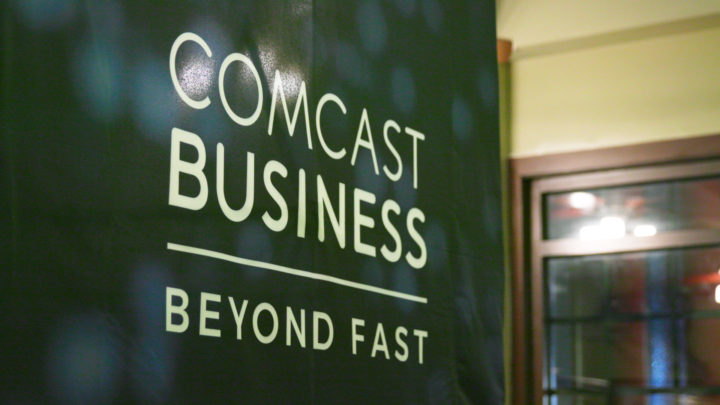Business Journal Events Series: Developing Smart Cities Takes a Convergence of People and Technology

A futuristic smart city, complete with intelligent cameras, autonomous vehicles and sensors galore, is closer than ever before – and cities that use smart technology stand to save money, improve public health and become hyper-efficient in their use of space.
In conjunction with its ongoing partnership with the Jacksonville Business Journal, Comcast Business recently convened a virtual panel of North Florida experts to discuss what it will take to create fully “smart” cities and what Florida cities have already done to make their communities smarter. Here are three key takeaways from the virtual event.
Connected ecosystems are a mix of different technology innovations
It will take a combination of technologies – including automated vehicle ecosystems, camera-monitored crosswalks and traffic lights, and sensors embedded in the ground – to truly create a smart space. These technologies generate and process a large amount of data that needs to move freely within a smart city ecosystem, so a strong data storage system and network for its transportation are equally as critical as the smart technology itself.
Still, smart cities are not created overnight. For already-established cities like Jacksonville, implementing technologies that can build on each other is a good way to get ongoing value from these systems. For example, smart metering programs have evolved so that municipal workers can read meters from a neighborhood’s entrance instead of walking around individual properties, which lowers liability risk and saves time and money.
The North Florida Smart Region Coalition’s entry for the Smart Cities Council’s Readiness Challenge included projects like autonomous vehicles and self-driving shuttles, dynamic stop lights that adjust to traffic conditions, as well as street lights that brighten as people pass by and dim again to conserve energy. With a consortium of more than 100 public agencies, nonprofits and businesses working to bring smart technologies to Jacksonville and St. Augustine, Florida, these concepts mark the beginning of a much broader effort.
Meanwhile, community spaces that are being built from the ground up present optimal opportunities for developers to incorporate smart city elements in original design plans, saving time and the hassle of retroactively trying to fit smart solutions into spaces with less flexible designs.
People are an equally critical element to the creation of smart cities
It will not just take new technologies and data storage to truly bring smart city ideology to fruition. As local businesses are reenergized and community spaces change design, key stakeholders in the community will play a critical role. Cities that partner with local technology companies to develop and implement smart solutions are often at an advantage, because these companies are nimbler and have more immediate access to innovative solutions than a city would on its own.
For example, a local startup recently developed an AI machine learning program for smart phones that can track important road data like potholes in real-time, which in turn helped conserve public budget for road maintenance.
Smart cities create a digital connective tissue in communities, but it is important to develop infrastructure platforms that reinforce human connections. Implemented correctly, these solutions can not only improve profit margins for cities, but also solve very real problems in communities, including rush hour traffic backups, pedestrian fatalities and timely health care delivery.
Cities looking to implement smart technology should first convene public forums to hear from community members on how certain technologies will be received, and if there are any barriers for implementation. And, with the recent rise in online meeting spaces, these forums are now easier than ever to schedule and attract community members to.
Remember digital deserts when developing smart cities
Even though smart city innovations are already being explored and implemented, an area cannot call itself fully “connected” until its digital deserts have been included as well. Digital deserts are typically under-served communities with poor to no access to network connectivity, something that is even more critical to the average household following shelter-in-place orders brought on by the Covid-19 pandemic.
It has become clear that broadband is an essential service, just as much as water and electricity are. Planning a new community with smart technologies built in from the ground up is certainly a best practice for design, but these types of projects are more likely to happen in communities that can afford that infrastructure. Meanwhile, low-income community members often don’t have the option to connect to the internet and work from home, making it harder for these working professionals to learn new skills or apply for jobs and for their children to fully participate in remote learning opportunities and virtual classes.
In the face of the ongoing pandemic and ever-changing development cycles, scaling and urban planning will be key to creating smart cities without digital deserts. Developers and community leaders should take this opportunity to invest in technologies that make their entire communities safer and smarter.
Comcast Business is the nation’s largest cable provider to small and mid-size businesses and has emerged as a force in the enterprise market and a leader in building smart cities including Atlanta, Chicago, Nashville and Philadelphia by working with cities municipalities to optimize service operations to better serve citizens and businesses. Visit business.comcast.com for more information.